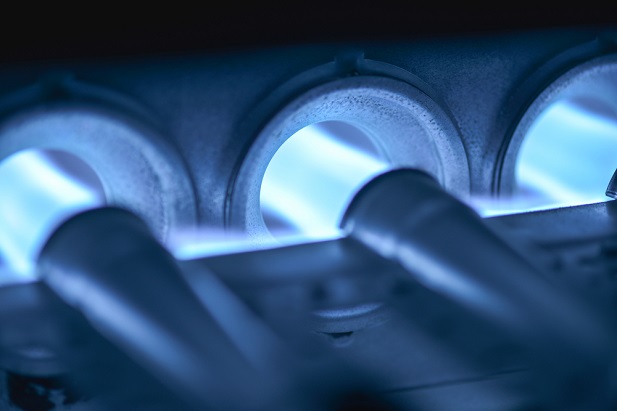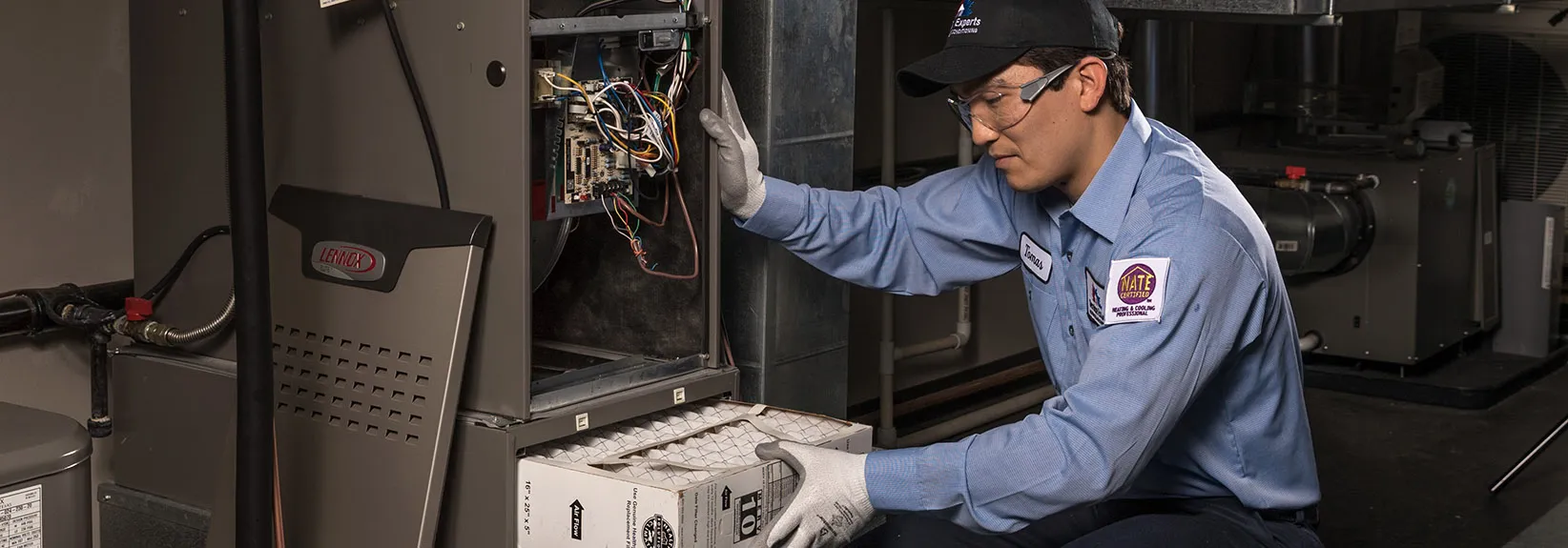Why Do You Need A Furnace Tune-Up?
Updated 2/27/19
A regular check-up for your furnace isn’t always top of mind or convenient. However, as we approach the colder months, now is the ideal time to make sure your furnace is ready to provide you maximum comfort throughout the cold season.
Among the leading ways to stop your furnace from going on strike and make sure it runs like a lean machine is with yearly scheduled tune-ups on your furnace. Just like all mechanical equipment, the life of a furnace will be extended with preventive maintenance, by ensuring that all the elements of the unit are working efficiently. Plus, regular cleanings can help pinpoint concerns before they become big problems and you end up breaking into your piggybank for emergency rates on a cold winter night. Plus, because furnaces burn fuel to provide the heat, it’s important to examine all the various pieces to ensure there aren’t any ruptures or leaks that could impact the safety of your family. Taking the time to schedule a tune-up, even if your system appears to be functioning properly, will save you time, stress, and money throughout the heating season.
Is it true my warranty is voided if I don’t get my furnace serviced?
Most manufacturers’ warranties necessitate annual HVAC maintenance to remain valid, so skipping your tune-ups can sometimes result in losing your heating or AC system warranty, which can be major money if your equipment does ever stop working in the middle of a cold snap. Always get all you can from your warranty by ensuring it’s valid as long as possible with annual furnace system tune-ups from Service Experts Heating & Air Conditioning.

What can I do to troubleshoot my furnace before calling a tech for service?
Here are a couple troubleshooting tips we suggest checking out early on in the heating season:
1. Inspect your home’s air filter
Air filters can easily be overlooked, but their importance to your home’s furnace efficiency cannot be overprovinced. Dusty air filters can cause a variety of comfort annoyances for homeowners, including:
- Running
- Restricted airflow
- Lower efficiency
- Increased energy bills
If you remove your home’s air filter, hold it up to a light. If you can’t see light coming through it, it’s more than likely been a while since your last heating service, and likely time to swap it out. If it’s a simple disposable air filter, just get a like-size new one. It’s also a good idea to write down the date you installed the new filter, so you know how old it is next time it needs to be changed. Check the filter packaging to see how long the new air filter is intended to be used.
2. Double check your thermostat.
- One of the easiest tasks that homeowners can do is keep an eye on the thermostat.
- Ensure it is set to Heat and not Cool, and that the temperature setting is greater than the current indoor temperature.
- If you can’t remember the last time you swapped out your thermostat’s battery, now is the best time to do it.
- When first going over to your heat setting, turn your thermostat up a few extra degrees to make sure that it is working properly and heating your home’s air.
3. Open up your air vents.
There’s a common misconception that you can save money by shutting the vents (supply registers) in rooms that aren’t being utilized. Resist the urge to close them all, as doing so can actually increase the pressure in your furnace, making it work harder to heat your home. This can cause broken blower motors, mold or mildew in your ductwork, damage to the compressor, a burst heat exchanger, and other problems.
- Full inspection. The service should include a full visual and point inspection to check all the working parts of your furnace and duct system. A qualified technician should be able to let you know if your equipment or individual parts are showing signs of wear during this review.
- Lubrication. Mechanical equipment needs lubrication to eliminate friction between the functioning parts. Your equipment tune-up should include a complete lubrication.
- Pilot and gas pressure adjustment. As part of your tune-up, corrections may be made to the pilot and gas pressure when needed to restore these elements to OEM specifications.
- Filter replacement. A comprehensive furnace tune-up should include a normal 1” filter replacement with your service. Typically, furnace filters need to be replaced at least every 90 days, which can enhance efficiency and prevent operational complications.
- Written assessment. Professional HVAC companies always will give you their analysis in writing or on the receipt with your tune-up, including their professional maintenance proposal for the next 12 months. This valuable information can help you determine the current condition of your furnace and outline ways to lower your energy bills.
4. Is your Furnace Receiving Electricity?
Switch the thermostat to “on” from “auto” to force the fan to function. If the fan comes on, power is working properly, but if it doesn’t, your furnace could be lacking power.
5. Is the Furnace Switch Functioning Properly?
Each furnace has a power switch (similar to a light switch) either on the furnace or on a nearby wall. Flip the switch and wait a few minutes to see if the furnace starts working. Also confirm that all access panels and doors on the furnace are completely closed.
6. Condensate Drainage
High-efficiency furnaces can drain off several gallons of water on a daily basis. If the drain lines aren’t clear and open, the furnace will shut down.
7. Check Vents for Blockage
If your home has a furnace that vents out the side of the house, assess the situation to see if anything could be blocking the intake or exhaust. Be sure the surrounding region doesn’t have leaves, animal nests, or snow/ice.
What Should You Expect After a Furnace Tune-Up?
Improved Function
Your heating and air conditioning system naturally loses energy efficiency over time. This loss of efficiency is due to a variety of issues, including dust and dirt, natural wear and tear, and buildup in drains or on burners. Keeping your heating system maintained with annual professional tune-ups can help to reduce these factors. During your tune-up, your HVAC technician will clean and check over your heating equipment, identifying areas of concern. They can identify failing parts in need of replacement before they become a bigger problem. A tune-up alone may instantly improve energy efficiency by up to 30%. You’ll also enjoy cleaner air and a cleaner home because your HVAC unit will be distributing clean air through a clean air filter. Perhaps one of the largest benefits you’ll enjoy following a fall furnace or AC tune-up is decreased utility bills. An overworked HVAC system must work overtime to heat and cool your home, while a furnace or air conditioner that has been professionally tuned can take less energy to provide exceptional indoor comfort. Because your heating system functions more efficiently, it will deliver superior heating at lower cost than you otherwise may have had during the coming months.
A Longer-Lasting HVAC System
Your HVAC system is an expensive investment with a limited lifetime. Depending on use, with professional maintenance you can expect your furnace and air conditioner to perform between 8-18 years before you will need to install a new one. However, poor maintenance is one of the main reasons for earlier replacement HVAC systems prior to end of average life expectancy.
If you’re wondering how much a furnace tune up costs, you can breathe a healthy sigh of relief knowing it’s not going to cost a limb. Often we have special offers in your local area that you can use to justify your next Starbucks run.
It’s best to take action now and be prepared than to regret it during the coldsnap of the century when your furnace gives up with a sad cough. If you would like to learn more about what a furnace tune-up includes, or how it benefits you—give our experts a call at 587-404-0790 or schedule an appointment online.
